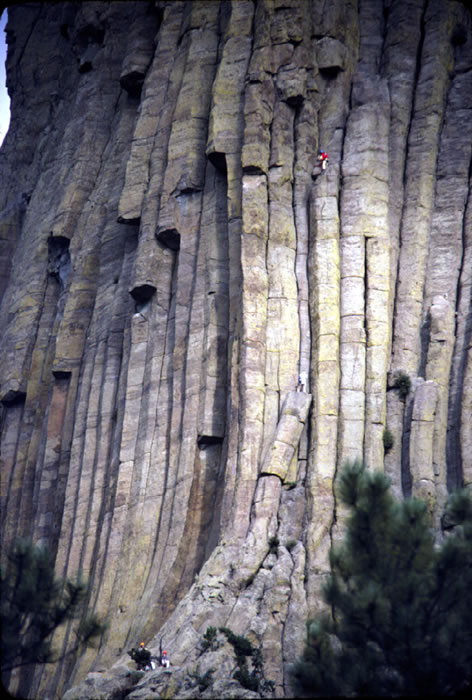

Climbers scale the sides of the early Tertiary (50-60 Ma) intrusion that forms Devils Tower at the north edge of the Black Hills. The prominent columnar jointing poses a problem for understanding the origin of the tower: though the shape of the tower has often led to the thought that it is the neck of an ancient volcano, such columns form perpendicular to isotherms (surfaces of constant temperature) as the body cools. If this formed as an intrusion of this shape, we'd expect the columns to radiate out from the center instead of rising steeply. An alternative is that the tower is a remnant of a broader body, probably shaped like laccoliths of slightly younger age in the Colorado Plateau that make up the La Sal, Henry, Pine Valley, and Abajo Mountains of Utah. Such bodies did not erupt at the surface but inflated pillow-shaped bodies within the sedimentary rocks previously present.